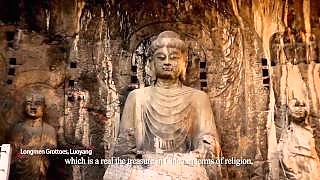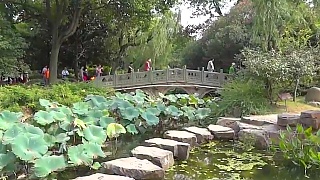
|
Each year, we up the quality. At BB, it's always about quality, not quantity. Variety, certainly, but not quantity.
Last videos of 2021 - with PopMatta ...
One needs to look out for Serpent / Laowai v.2, and not get duped; see through the disguises (devil dressed as a dove); it is for sure that they are out there ...
Geo-politics is a mine-field. Be aware of it; but don't let it dull your mind. Let love, creativity and calm be the air that you breathe.
The world is doomed to destruction; the vast majority do indeed vastly outnumber the zealots, but in the West, though the people are by and large brainwashed, for sure, most will ever be too dumb to realize it. Plus, western culture has bred a large proportion of narcissists, devoid of empathy and compassion. Extreme individualism ensures ultimate catastrophe.
Once extinction becomes possible, it becomes inevitable. The power of annihilation grows much faster than general IQ/EQ; hence the 'great silence' in the universe.
While the Earth is still here, live life to the fullest, each remaining day. The tragedy will play out over and over for eternity; don't waste much time on thinking about it.
*** All one needs to know is ...
We are all one family; but some in the West just want division, control and power - and that's not family - that's hate; 'divide and rule' (elitism / colonialism / imperialism / hegemony).
The difference between China and the West ? It is simply, and profoundly, this :
For China, the people are family.
For the West, the people are livestock.
For China, the people are family; not just Chinese, but all people.
For the West (the 'elite'), the people are merely livestock.
All the best for the year ahead, from BeiJingBuzzz.
Keep it real.
Live more ...
|
 Planning war on China – part 27
Planning war on China – part 27




![Planning War On China part 40 (the encore). From now, all similar content will be on the new Geopolitics page, so do check that out and bookmark. Something Different, health, and psychology videos are likely to also move to their own pages. So we will still cover all these aspects of life, but have more time to focus on Chinese culture and China travel. *************************** Official racism is a very important fact to consider, and because it is is based on propaganda, can be easily missed for what it really is. Yet once seen, it is all so clear. Us and Them - is the sales pitch of supremacists and bomb companies. That is ALL it is. There is no `us and them`; that is just a scam to fool you into obedience / subservience / enslavement. The real schism is that there are real / open-eyed people, and then there are the brainwashed / believers people. Simple as that. Puppets at the top; puppets at the bottom. One life, one world, one family. One has love, or one does not. Real love doesn`t have targets; real love is a light that shines in all directions. Onto the video film . . . With George Galloway in conversation with Jerry`s Take on China . . . Bonus films . . . George at his very best - don`t miss it . . . What is more important - life or money (power) ? Simply believe ? Or be free to see reality ?? No longer puppet. Live more . . . Because it is not about `me` (that is the scam / fantasy, and a big topic in itself - `your problems are all your fault`, is part of it); it is really about `WE`. In China, the people are family. In the West, the people are livestock. And that is the `threat`. [ video v=fIxPv2Dn_P0 ] Oliver Stone interviews Vladimir Putin . . . Taiwan the next Ukraine ? . . . Lee Camp . . . [ video v=OSkpIq3T-Zc ] Racism is racism is racism. There is NO excuse, no matter how `official` it is sold to you. Something like 3 million died in the Vietnam war (not including the carpet bombing of Laos and Cambodia), alone. This is what racism entails. How many times will this lie play out ? Meanwhile . . . Peace. Official racism. Reality is so very different from the 'official' / MSM narrative / fairy tale - DON'T MISS THIS !](https://img.youtube.com/vi/Kc7f4JKhwtk/mqdefault.jpg)














![`US-sponsored separatist groups, backed by Washington for decades, are being mobilized to attack and undermine activities related to the BeiJing 2022 Olympics, starting with the torch relay in Greece. I explain the background of the “Free Tibet” movement and how the US government, through the CIA, backed it as early as the 1950s and transferred its operations to the National Endowment for Democracy (NED) [or `Dominion` / enslavement]. ` With The New Atlas . . . Bonus films - terror activities by US-backed `opposition` in Myanmar . . . Bonus film 2 - subverting the `left` . . . Bonus film 3 - on Ecuador . . . Bonus film 4 - on Cambodia . . . They say : `How dare you put your face in front of my fist ! Serve your master. Or else. ` More . . . On the US plan to nuke Chinese cities - as revealed by Daniel Ellsberg, famous for the `Pentagon Papers`, with NuMuves . . . On the Falun Gong cult . . . *** Planning war on China - part 11 - don't miss it ***](https://img.youtube.com/vi/2w31eNNcGVU/mqdefault.jpg)
















![No video in this post. At BB, we think this is something crucial to well-being and we`ll do our best to convey our experience ... The most important point is - don`t imagine that you can `fix` things - at the start, one needs 3 or 4 meetings to relax and know someone - but beyond that, if things are not going well, get out early; one cannot `fix` incompatibility, and certainly not a narcissist (they kind of know that they are wacko, but will never, ever admit it). `Love` shouldn`t require a lot of work; a bit maybe; but if one senses that it is all `one way`, or not going anywhere, quit. The relationship is very unlikely to get better; it almost certainly will get worse. Doomed. Save yourself years of wasted life. If you don`t, expect to become bitter and twisted yourself. At BB, we feel that health is THE foundation to all else, so we do cover health in this regard, although primarily a travel and culture site. Thousand page books are not our thing; we get straight to the point. If you want to delve deeper, consider this - why is a relationship so important to you ? Going beyond `animal instincts` is beyond many - they never really mature. If the immature instinct is made the `gold standard`, what can one expect ? If one cannot go beyond the animal brain, one is f****d [animal brain lingo]. The thing is, bad relationships that progress to having kids, can produce sad / bad kids (that may have to endure two decades of emotional abuse). And likely to repeat the cycle, and possibly go into politics, etc. - hence, it is very important to not be a part of this. Maybe, romantic `love` is simply the grand distraction meme that helps keep the elite in power. Relationships not going well – BB’s take – quit early](https://www.beijingbuzzz.com/choral3.jpg)






